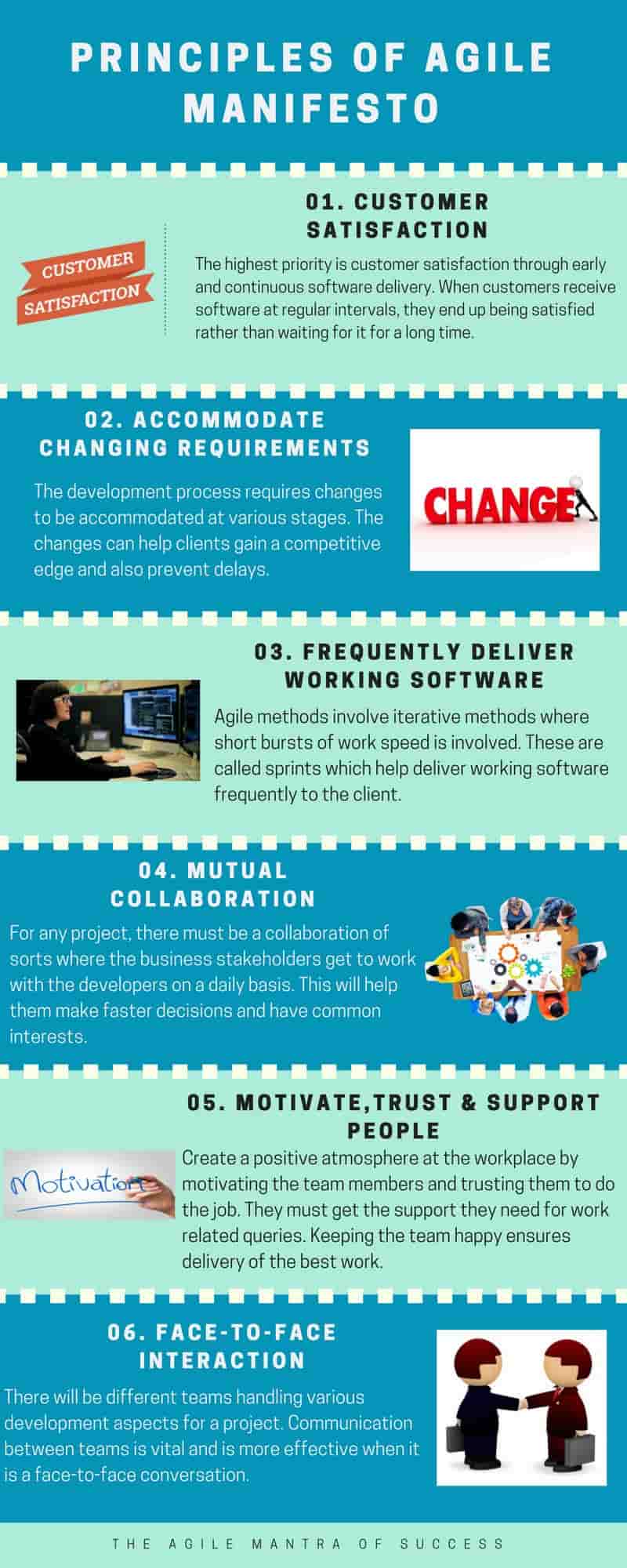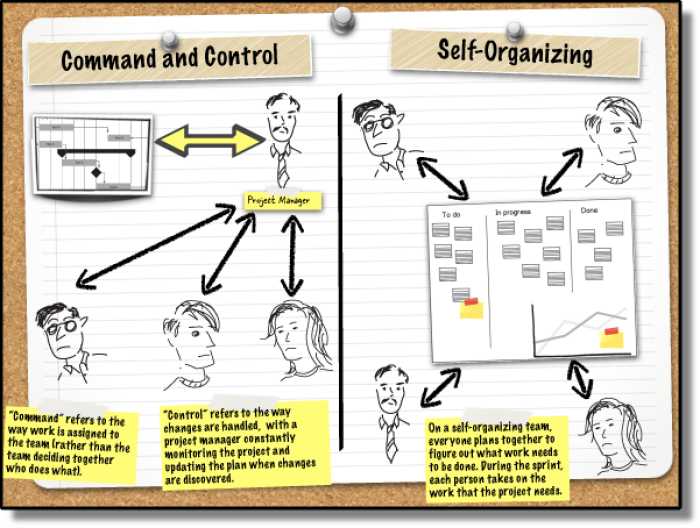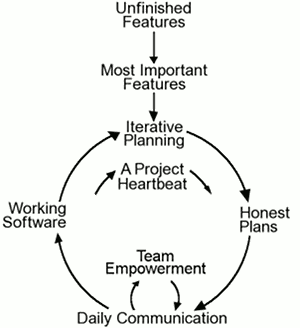12 Principles of Agile and Why You Need A Bootcamp to Learn Them Right
Liberating development teams from heavyweight methodologies and tedious documentation processes, the Agile framework has been skyrocketing to popularity for years now. As Agile methodology branched out beyond IT ecosystems, its values and principles have proven to be impactful on all aspects of a business.
The Agile method of software development aims to make the coding work simple. It lays a strong emphasis on delivering working software as soon as it is ready. There are 12 principles of the Agile manifesto. They help you discover better ways of developing software by doing it. You can also help others do the work and create value. The field of project management and services is inundated with migrations towards Agile and Scrum management models.
More and more projects are moving to the agile method of software development. If you are a project manager in the software sector, it is good to apply the Agile practices to the work. It will yield high-quality output. The Agile Manifesto acts as a set of guidelines for developers to develop software programs in the best possible way. Here are the 12 principles of Agile:

1) Customer Satisfaction is Primary
In an Agile work environment, everything is centered around customer satisfaction; all the features of the project you deliver should provide value to the customer. This is achieved primarily by engaging with the customers and carefully incorporating their feedback into the working features of the product. The trick is to focus on the features that deliver the highest possible value to customers at the onset of the project. This will enable the team to demonstrate functionality and earn trust in the early phases of development.
2) Continuous Delivery Ensures Safety
This principle motivates an Agile team to keep the product ready for release or delivery throughout all stages of development. What does ‘ready for release’ actually mean? Does it require the team to adopt shorter cycles? Or is the product expected to be released into production very frequently? The short answer is no.

Source: DZone
Traditional waterfall environments wait until the last phase in the development cycle to build something tangible. This is why the Agile framework is refreshing; continuous delivery in Agile development only suggests that the team should be able to release the product with minimal effort at any stage; that is, there is no additional amount of work to be done when the product needs to be delivered.
3) Sustainable Development is the Way to Go
Sustainability is the best method to ensure measurable and consistent development of the product. The best approach to achieve sustainability is by understanding the team’s velocity and dividing work appropriately into short spells. This will help the team set realistic goals and achieve them within given constraints.
In traditional waterfall environments, developers are often overloaded on unachievable deadlines. On the contrary, in Agile environments, developers get to work at a steady pace and thereby enjoy what they do. The best part? Developers who enjoy what they do will only look to do more of it.
4) Simplicity is the Fuel
Though it might sound difficult to implement simplicity in complex working environments, this principle is crucial in delivering value. Where does simplicity find relevance in an Agile environment? Simplicity is imperative to stay away from delivering less value and valueless work. This involves helping the end-user in identifying their requirements, doing away with unnecessary tasks, keeping distractions at bay, and filtering your options to make wise choices. The religious execution of this principle saves time, reduces waste, and makes sure that you are treading the right path.
5) Self-organizing Teams Make the Best Teams

Source: Pinterest
A self-organizing team that relentlessly pursues quality is the ultimate success machine in an Agile environment. Nobody in an Agile environment is ordered to take on specific tasks; they always volunteer even if the task does not belong in their area of expertise. Not only is an Agile team self-organizing, it is also cross-functional; it is a self-reliant work unit that takes on a function and delivers the value it promises.
By building a self-organizing team, the priorities and roadmap for the organization can be easily established. Providing them with challenges and empowering them to make collective decisions will urge them to come up with solutions.
6) Consistent Reflections on Processes is Key to Success
The key to maximizing productivity is regularly reflecting on the effectiveness of tasks. By fine-tuning the behavior and streamlining the processes, an Agile team can enhance productivity. Contemplating the team behavior, reviewing the ongoing processes, addressing challenges, reviewing solutions, and considering potential alternatives are some of the core activities associated with this principle.
What went according to plan, what didn’t pan out, what areas require improvement, what possible actions can be taken; these are some of the important questions that every team member needs to ask themselves.
7) Change Management is a Necessity
Project development is undoubtedly a complex process; it is facilitated by a combination of interrelated activities that are delegated to different teams. This complexity sometimes calls for unprecedented changes, which an Agile team should always be ready for. With the market populated by diverse products, it is no longer possible to be conclusive about the requirements of a project.
But, no organization favors waste of resources or time; the only countermeasure to tackle the ever-evolving nature of the market is to embrace change. While a traditional waterfall approach views change as a threat, an Agile environment utilizes change to woo potential customers.
8) Cooperation Brings About Unity
This Agile principle requires customers, stakeholders, and developers to work together to achieve goals. To deliver a quality product, it is important to have everyone on the same page; by getting the business representatives and developers to work together, identifying and fixing blind spots becomes easy. Not only does close cooperation reduce risks, it also enhances the communication between teams. There are plenty of tools that can be leveraged to facilitate close cooperation today if co-location is not possible.
9) Attention to Technical Excellence is Mandatory
A good developer reduces waste by keeping redundancies away. This means he or she has to conduct health checks consistently to spot inefficient codes. The objective of each iteration should be to produce better code. Failure in performing these evaluations will eventually lead to the birth of an unhealthy product.
10) Working Software is the Real Measure of Progress

Source: Agile Process
What is ‘working software’? Working software is the tested software or product that delivers value to the customer or end-user. This is perhaps the most important phase in the development process as it involves the end-user.
You are on the right track if the product you deliver is functional and works the way you intended it to. If the software works, it implies that the product delivers the value you promised to your customers. If it doesn’t, you need to keep working until you fix the bad design. Fixing bugs or creating documentations cannot override a product that is dysfunctional.
11) Products Need to be Developed Around Motivated Individuals
Giving a stable, supportive environment to work is of paramount importance in an Agile setup. Team members need to feel nurtured so they can trust their employer and get the job done. They should be empowered to make decisions on their own, address challenges, come up with solutions, and remove impediments. Team members should also enjoy the autonomy to experiment and pitch ideas that will lead to business improvement.
12) Face-to-face Conversation is the Best Form of Communication
Face-to-face conversation is one of the most effective ways of communication. You get a clear picture of what someone else feels about a certain process or task. But, this principle does not suggest that all team members should mandatorily engage in face-to-face communication. It rather hints at the fact that people should be motivated to establish direct communication channels and further transparency. There must be rigorous feedback cycles and regular interaction between people to sustain healthy communication.
Why Choose a Bootcamp to Learn Agile Principles?
If you are a self-motivated individual who is confident about self-paced learning, you’re self-reliant, indeed! But, there are some unbeatable reasons to choose a bootcamp over a self-learning experience.
- Immersive Learning - Unlike self-learning experiences, bootcamps provide you with an immersive learning atmosphere. They make sure that you get a foundational understanding of the principles of Agile through applied learning experiences. This will later help you execute Agile principles and values in real-life situations.
- Run by Experts - Bootcamps are led by industry veterans who already have a holistic understanding of the 12 principles of Agile. This will give you a personalized learning experience where you can access their guidance at your will.
- Hands-on Experience - Nothing beats hands-on experience when it comes to learning new skills; in order to meticulously apply Agile principles in complex environments, you need hands-on project experience. Bootcamps provide the perfect environment for you to test your knowledge and skills in implementing Agile principles.
- Comprehensive Lesson Plan - The lesson plans of bootcamps are loaded with real-life examples and case studies that demonstrate the 12 principles of Agile. Not only do they give you a lucid explanation of the principles and concepts, but they also help you acquire a practical understanding of Agile project management.
- Better Job Prospects - Bootcamps have proven to be the best way to land better Agile roles and responsibilities. With rigorous applied learning, group discussions, and evaluations, you prepare yourself to land the job of your dreams; this paves the way for increased access to better job opportunities.
The adoption of Agile methodology has certainly helped organizations streamline their processes and reduce waste. Since there is a shortfall of refined Agile practitioners, the future of aspiring Agile professionals looks bright. Now is the right time to learn the methodology.
GreyCampus offers Agile bootcamp training to aspiring candidates all over the world. The program is led by industry experts and gives you one year of access to quality learning materials. It comes with well-structured lesson plans and simulated exams.
Want To Nail Agile Project Management? Consider Getting Certified Today!
